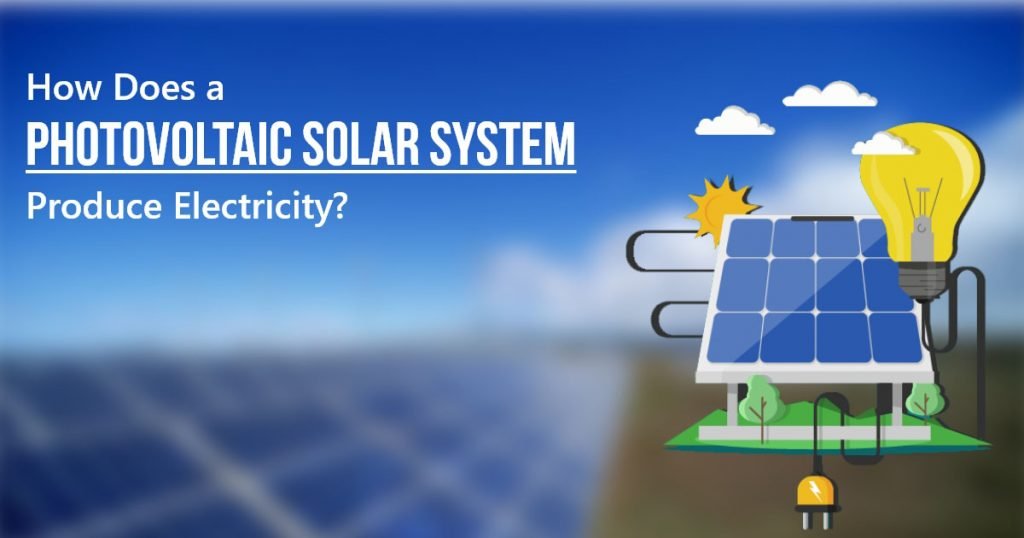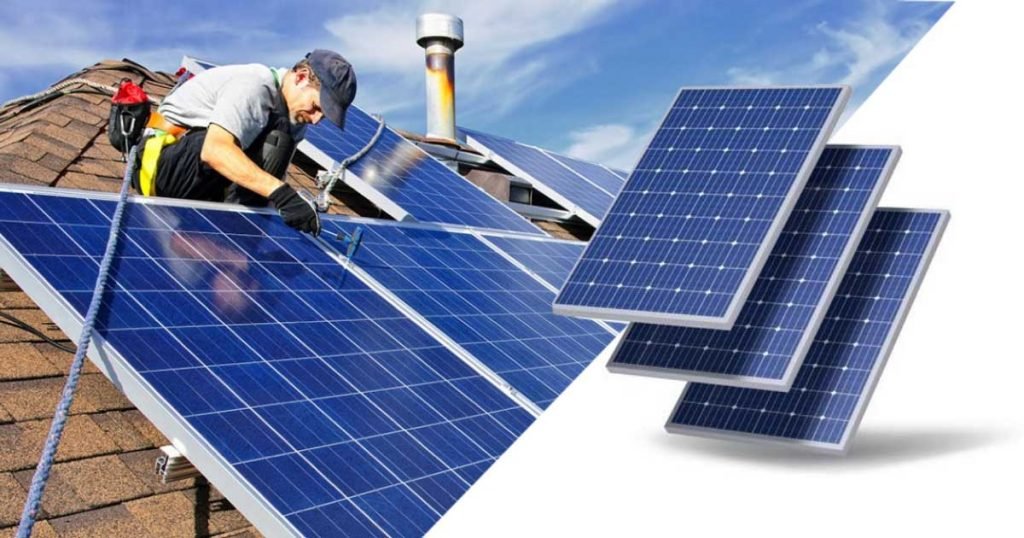How Does a Photovoltaic Solar System Produce Electricity?

Solar panels are a cost-effective and environmentally friendly solution to lower your carbon footprint. Photovoltaic cells convert sunshine into electricity, which is how they work. The solar panel consists of two basic components: a solar cell or cells that catch solar energy and convert it to electricity, and an inverter that transforms direct current (DC) power to alternating current (AC) power (AC). You can get inexpensive electricity without having a detrimental influence on the environment if you use solar panels!
What is Photovoltaics?
A Photovoltaic (PV) cell is an energy harvesting technology that uses the photovoltaic effect to transform solar energy into usable power. PV cells come in a variety of shapes and sizes, but they always rely on semiconductors to interact with photons from the Sun to generate an electric current.
At the atomic level, Photovoltaics is the direct conversion of light into electricity. The Solar Power System Installation is a feature of some materials that causes them to absorb photons of light and release electrons. When these free electrons are collected, they produce an electric current that can be used to generate power.
Also Read – The Durability of Solar PV Photovoltaic Panels during Hurricanes and Hail Storms?
How Does Solar Energy Work in a Photovoltaic (PV) System?

As we discussed in The Beginner’s Guide to Solar Energy, solar panels transform the energy of photons (light particles) into electricity. The photovoltaic effect is the name for this mechanism.
When a photon collides with a photovoltaic (PV) device, the photon’s energy is transferred to the material’s local electrons. The movement of these energised electrons produces an electric current.
Solar cells (inside solar panels) provide direct current (DC) power, which is then converted to alternating current (AC) by an inverter. This permits it to be routed back to the electric grid and utilised to power appliances in the customer’s home, which runs on AC electricity (or commercial building, in the case of commercial solar installations).
That concludes the detailed explanation. In summary, there are three main processes in the process of how solar panels work:
- Solar panels contain solar cells that collect light from the sun, causing an electric current to flow.
- An inverter is a device that converts DC electricity to AC power.
- This electricity is utilised to meet the customer’s present energy needs in their building, with any excess electricity being exported to the grid.
Photovoltaic effect: explained
- When a PV Installation is done, it is exposed to sunlight, the photovoltaic effect occurs, which generates voltage or electric current in the cell. These solar cells are made up of a p-n junction, which is made up of two different types of semiconductors: p-type and n-type.
- As electrons flow to the positive p-side and holes move to the negative n-side when these two types of semiconductors are joined, an electric field is created in the junction region. Negatively charged particles flow in one direction and positively charged particles move in the opposite direction as a result of this field.
- Photons, which are tiny bundles of electromagnetic radiation or energy, make light.
- When photons of a specific wavelength strike these cells, their energy is transmitted to an electron in the semiconducting material, causing it to leap to a higher energy state known as the conduction band.
- These electrons are free to flow through the material in their excited condition in the conduction band, and it is this motion that generates an electric current in the cell.
Solar Energy has the Following Advantages

It lowers your power bill: To begin with, there’s the apparent benefit of lowering your energy expenditures dramatically. Solar panels create absolutely free electricity after they are installed. Solar energy can also be used for water heating, which is one of our home’s largest energy consumers.
Earn money with solar energy: As previously said, if you have excess electricity generated by your solar panel system, you may sell it to the grid and earn money. Hire Rooftop Solar Panel System Installers.
Increase the value of your home or business: PV systems are low-maintenance and come with up to a 25-year warranty. Many individuals are interested in installing solar panels, and buying a house with them already installed is an advantage. As a result, having a system in place can raise the value of your home or business.
Environmentally friendly: Using renewable energy reduces fossil fuel emissions and provides a steady supply of long-term power. You may help reduce pollution and its effects on the Earth’s atmosphere by switching to a renewable energy source.
Tax incentives: Have been established to encourage more individuals to use renewable energy. These tax breaks enable you to save money on your system.
Also Read – 5 Things to Know Before Opting Solar Power in your Home.
Final Thoughts-
Solar energy will almost certainly exist in the future, to the point where we can consider it infinite. It is, in essence, renewable, unlike the fossil fuels we now utilize, which are finite. Furthermore, the usage of solar energy does not pollute the air or harm the earth’s surface. It does not necessitate time-consuming and costly extraction processes. Get in touch with Solar Panel Companies in California.